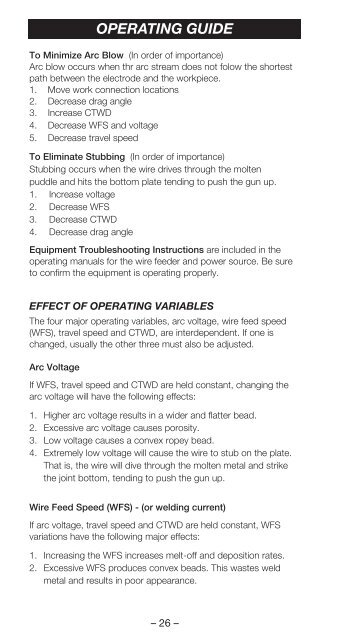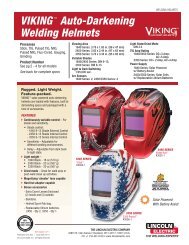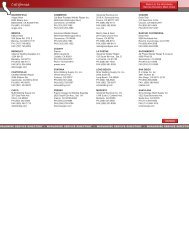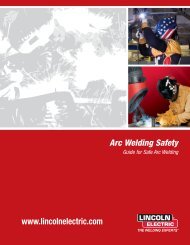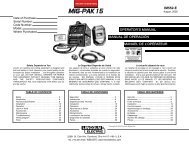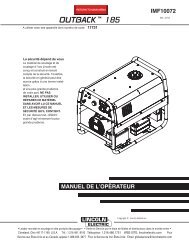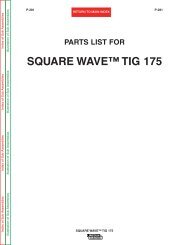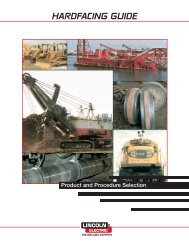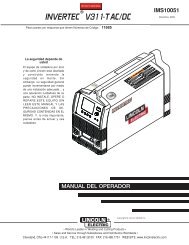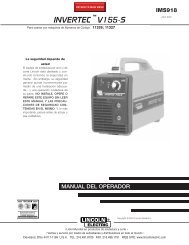Innershield Welding Guide (pdf) - Lincoln Electric
Innershield Welding Guide (pdf) - Lincoln Electric
Innershield Welding Guide (pdf) - Lincoln Electric
Create successful ePaper yourself
Turn your PDF publications into a flip-book with our unique Google optimized e-Paper software.
To Minimize Arc Blow (In order of importance)<br />
Arc blow occurs when thr arc stream does not folow the shortest<br />
path between the electrode and the workpiece.<br />
1. Move work connection locations<br />
2. Decrease drag angle<br />
3. Increase CTWD<br />
4. Decrease WFS and voltage<br />
5. Decrease travel speed<br />
To Eliminate Stubbing (In order of importance)<br />
Stubbing occurs when the wire drives through the molten<br />
puddle and hits the bottom plate tending to push the gun up.<br />
1. Increase voltage<br />
2. Decrease WFS<br />
3. Decrease CTWD<br />
4. Decrease drag angle<br />
Equipment Troubleshooting Instructions are included in the<br />
operating manuals for the wire feeder and power source. Be sure<br />
to confirm the equipment is operating properly.<br />
EFFECT OF OPERATING VARIABLES<br />
The four major operating variables, arc voltage, wire feed speed<br />
(WFS), travel speed and CTWD, are interdependent. If one is<br />
changed, usually the other three must also be adjusted.<br />
Arc Voltage<br />
OPERATING GUIDE<br />
If WFS, travel speed and CTWD are held constant, changing the<br />
arc voltage will have the following effects:<br />
1. Higher arc voltage results in a wider and flatter bead.<br />
2. Excessive arc voltage causes porosity.<br />
3. Low voltage causes a convex ropey bead.<br />
4. Extremely low voltage will cause the wire to stub on the plate.<br />
That is, the wire will dive through the molten metal and strike<br />
the joint bottom, tending to push the gun up.<br />
Wire Feed Speed (WFS) - (or welding current)<br />
If arc voltage, travel speed and CTWD are held constant, WFS<br />
variations have the following major effects:<br />
1. Increasing the WFS increases melt-off and deposition rates.<br />
2. Excessive WFS produces convex beads. This wastes weld<br />
metal and results in poor appearance.<br />
– 26 –


